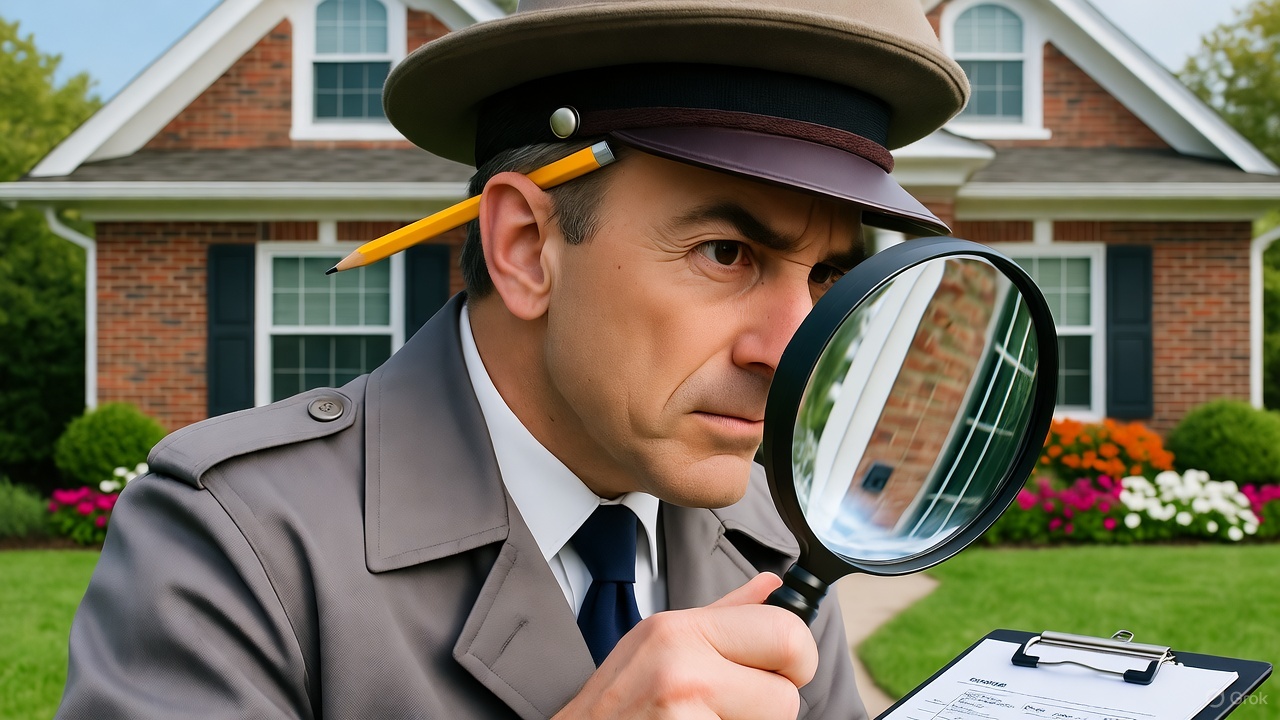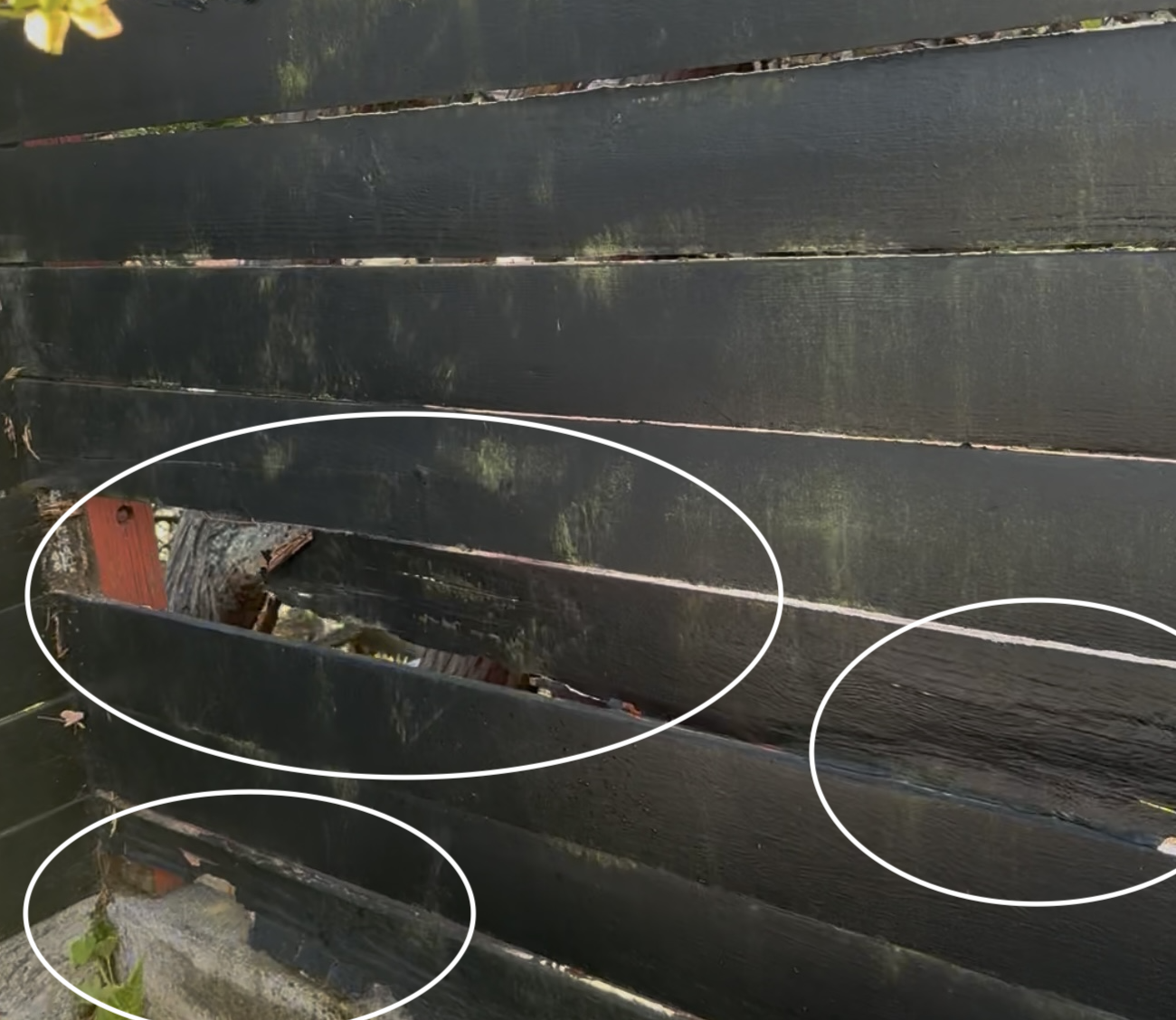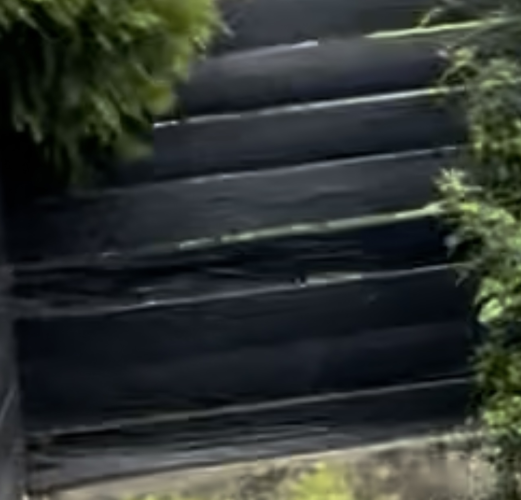Paying For A Home Inspection Is Worth The Cost, Don

As a buyer and seller of real estate since 2003, I’ve learned that getting a home inspection before each purchase is one of the most important steps in protecting yourself. You want a professional — someone who’s inspected hundreds of homes — to review your potential property for at least an hour before you submit an offer or close escrow. Otherwise, you could be in for some nasty, costly surprises after you move in.
That said, after hiring an inspector for my first two purchases — a condo in 2003 and a house in 2005 — I stopped using them. By then, I’d done a couple of remodels and learned a tremendous amount about plumbing, electrical systems, and general construction. And through that experience, I came to realize something fundamental about homeownership: everything is fixable with enough time and money.
In the past, seeing a dent or hole in a wall used to bum me out. Now I know patching, sanding, and painting are simple weekend projects. After opening up the shower wall to replace plumbing, I realized leaking pipes are straightforward to fix. And after removing old knob-and-tube wiring in my previous 100-year-old house and fishing modern Romex through the walls, I discovered electrical solutions are straightforward.
The longer you’ve owned a home, and the more remodeling projects you’ve taken on, the better you get at conducting your own informal “home inspection.” Bring a friend or your real estate agent along, and you’ve got multiple sets of eyes scanning for red flags. You can even print out my post, 10 Issues to Look For Before Buying a House, as a guide during your walkthrough.
Still, even for seasoned owners, it’s easy to get blindsided.
A Home Inspector Helps You See Straight
The problem with home buying is that emotions can cloud judgment. When you fall in love with a property, your brain releases all sorts of chemicals that make you ignore obvious flaws. It’s like dating. You overlook the fact that he’s 35, lives with his parents, and is deep in debt because he’s so charming.
A professional home inspector has no emotional attachment. Their job is to see what you can’t, or won’t, see. They’re the sober friend telling you to maybe slow down before you make a six- or seven-figure commitment.
In 2022, I fell head over heels for a home. It felt like the perfect place to raise a family. Even though I couldn’t quite afford it, I was so enamored that I briefly considered borrowing money from a friend — something I’ve always avoided. The price was too steep, and I didn’t want to be beholden to anyone, so we passed.
A year later, the house came back on the market at a lower price. With the rebound in stocks, we could now afford it on our own. We got into contract and spent roughly 15 hours over two years inspecting every inch of the property — five people, including my sister, her boyfriend, and the listing estate agent who sold me my previous home.
We found and fixed leaky interior pipes, did extensive water testing, and even brought in a mold and water specialist. Everything looked solid.
Our escrow lasted 2.5 months, and we thought we’d covered everything. But we hadn’t.
Overlooked Issues That Could Cost Up To $20,000
Despite all that effort, we still missed a few details. Here are three that stand out and what they taught me.
1) The Washing Machine Flood
Soon after we moved in, we ran our first load of laundry. The washer and dryer was new, so we didn’t bother testing them during escrow. All we did was see if they turned on or not. How could anything be wrong?
Forty-five minutes later, we came back to find the laundry room flooded. Water everywhere. What the hell?!
The seller’s handyman quickly diagnosed the problem — the washer’s filter had been installed incorrectly, causing water to leak out during the spin cycle. Would a professional inspector have caught that? Maybe. Maybe not. But it’s the kind of thing an experienced inspector might notice during a test run, or at least suggest you check before closing.
The fix was free, but the cleanup was annoying and the experience was stressful. It’s a good reminder: don’t assume “new” means “working.” Test every appliance thoroughly before you buy.
2) The Loose Gutters
San Francisco winters are rainy and windy. We bought the home in fall, so we had to trust the roof and drainage systems would hold up through the season. The first winter was fine. The second, not so much.
One blustery night, I heard an odd rattling above our bedroom. At first it was intermittent, but soon it became a clanking, metal-on-wood banging sound that kept me awake. Finally, I called a roofer to check it out. He discovered the gutters were pulling away from the fascia, held mostly by short nails instead of deep screws. Over time, the wind had loosened them.
The repair was simple — $350 to remove the nails, replace them with long screws, install new brackets, and reseal one section to stop a drip. Money well spent. There was no way I was climbing that roof myself.
Would a home inspector have caught it? Probably not. Most inspectors don’t climb onto roofs, and you can’t tell from the ground whether gutters are fastened with nails or screws. But now I know — and so do you.
If you’re not buying a home when it’s pouring rain, I suggest you put it in your contract to make the seller fix any leaks over the next 12 months.
3) The Rotten Fence Boards
This one stung because it was avoidable. About two years after we bought the home, I noticed a section of fence in the back corner starting to crumble. At first, I chalked it up to normal wear. Then part of the board fell off one day. When I looked closer, I realized multiple boards were rotting from the inside out.
How had I missed this?

After measuring the boards — 188 inches long, 5.25 inches wide, and 0.7 inches thick — I called my handyman. He replaced six 188-inch redwood boards and two 122-inch redwood boards. Material cost: $420. Labor: five hours at $400. Add in paint and my own 2.5 hours of work, and the total came to around $1,000.
That’s not terrible, but it was frustrating because the signs were there all along. I checked a video from 2022, when the house first came to market, and saw warped boards and hairline cracks hidden by a fresh coat of paint. I’d been too enamored watching my kids play in the backyard to notice. My mind was already imagining what life could be like in the house.

Would a home inspector have caught the rot? Probably. They tend to poke around fences, decks, and exterior trim for soft spots. That alone could have saved me time and money, or given me leverage to negotiate a credit before closing.
Replacing the entire rear fence with new posts would now cost $15,000–$20,000, so catching the early signs matters. Even if only part of the fence was replaced, that knowledge could have easily saved several thousand dollars.
A Professional Home Inspector Doesn’t Cost Much
Considering the potential savings, a home inspection is relatively cheap insurance.
For a 2,000-square-foot home, expect to pay around $500–$850 in a big city. Double that for a 4,000-square-foot home. Even for a 5,000+ square-foot mansion, inspections rarely exceed $2,500 – a rounding error compared to your down payment or mortgage.
A typical inspection takes two to three hours and covers:
- Exterior: roof, gutters, siding, windows, doors, foundation, visible structure
- Interior: walls, ceilings, floors, windows, doors, finishes
- Systems: plumbing (pipes, fixtures, drains), electrical (panel, outlets, wiring), HVAC, water heater
- Attic/basement/crawlspace: insulation, ventilation, moisture, pests, or water damage
- Additional features: garage, deck, patio, pool/spa, detached structures
Afterward, you’ll receive a detailed written report with photos, notes on needed repairs or safety concerns, and maintenance items to monitor.
Some items aren’t automatically included, such as termite inspections, mold or radon testing, sewer line scoping, or structural reviews. Those usually cost extra. But in older cities like San Francisco, it’s often worth ordering at least one or two of these add-ons.
Because much of the local San Francisco housing stock dates back to the early 1900s, inspections can uncover unique problems: earthquake vulnerabilities, old wiring, unpermitted additions, or crumbling foundations. The best inspectors understand local construction quirks, like hillside lots or shared foundations in multi-unit buildings.
If you’re buying a condo or TIC, confirm whether the inspection covers just your unit or shared structural elements maintained by the HOA.
And always, if possible, attend the inspection yourself and record videos. Ask questions, take notes, and learn about ongoing maintenance. The best inspectors treat it as a teaching session, not just a checklist.
The Home Inspection Contingency
In hot real estate markets, buyers often waive contingencies — including inspections — to make their offers stand out. Sellers love “clean” offers because they reduce the risk of a deal falling through.
But for buyers, especially first-timers, waiving the inspection contingency can be risky. If the inspection reveals a major issue after you’re in contract, you’ll want the option to back out or renegotiate. Just remember, everything is fixable with time and money.
In a slow market, always include an inspection contingency. In a competitive one, consider doing a pre-offer inspection instead. That way, you still get the professional review without jeopardizing your offer’s strength.
If you’re an experienced buyer or investor, you can sometimes skip the contingency because you’ve developed a sharp eye. Further, you’re bringing along your friends, family, and handyman too. Good negotiation skills can often get you credits or repairs even without one. But for most people, the small cost of an inspection is worth the peace of mind.
As both an experienced buyer and seller, I’ve found that all successful real estate negotiations come down to respectful compromise. You can protect yourself without being adversarial and a home inspection gives you facts to negotiate from, not emotion.
Hire a Home Inspector for Peace of Mind
If I ever buy another home — say, in Hawaii — I’m definitely hiring a local home inspector first. Coastal properties come with unique challenges: salt air, humidity, and wind damage. Spending $1,000 on an inspection for a multimillion-dollar property is a no-brainer.
We already pay for homeowner’s insurance and rarely use it, if ever. At least with a home inspection, you’re paying for knowledge, the kind that could save you thousands and hours of frustration down the road.
That said, don’t outsource 100% of the responsibility. Just like you wouldn’t rely solely on your kids’ teachers for their education, don’t rely solely on a home inspector to find every issue. They’ll miss some things, like my washer filter or loose gutters, but they’ll probably catch 80%+ of what matters.
If I had spent $1,000 on an inspector in 2023, I likely would have saved at least that much fixing my fence, and maybe several thousand more.
A good home inspector doesn’t just give you a report. They give you clarity and confidence that what you’re buying is within expectations. And that peace of mind, especially when you’re investing hundreds of thousands or millions of dollars, is worth every penny.
Readers, what are your thoughts on hiring a professional home inspector? Have you ever skipped an inspection to make your offer more competitive, only to regret it later? Or maybe your inspector uncovered something major you would’ve never caught yourself? Share your experiences — the more we all learn from each other, the better prepared we’ll be for the next deal.
Invest In Real Estate Without The Headaches
After dealing with leaky pipes and loose gutters, it’s nice to know you can still invest in real estate without the maintenance or stress.
That’s why I’ve invested with Fundrise, a platform that lets you earn passive income from residential and industrial properties nationwide. With over $3 billion in assets under management and 350,000+ investors, Fundrise makes it easy to grow your wealth over time.
With a minimum investment of only $10, anybody can get started today. Fundrise is a long-time sponsor of Financial Samurai as our investment philosophies are aligned.




